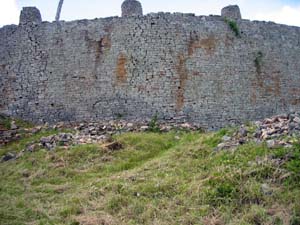Zimstone Gallery
Artwork from the African Diaspora
History of Shona Sculpture
African stone sculpture from Zimbabwe is often called Shona sculpture after the name of the largest tribe engaged in sculpting. Zimbabwe – derived from the Shona word dzimbadzamabwe which means ‘house of stone' – is the only country on the African continent that has large deposits of stone suitable for sculpting.
Ancient times stone
In ancient times stone was used extensively for building and for decorative purposes. The Great Zimbabwe settlement, now a World Heritage Site, is testimony to the skill and artistry of the ancestors of today’s sculptors. Built between the 11th and 15th centuries, at a time when Europe was just emerging from the Dark Ages, these accomplished stone masons used hand-hewn granite blocks to painstakingly and precisely build ornate towers and enclosures – all free of mortar. Parts of the settlement combine natural rock formation and dry stone construction – the two blending aesthetically and functionally.
Centuries later, in the late 1950s
Frank McEwen, the visionary curator of the National Gallery of Zimbabwe, recognizing the Shona peoples’ affinity with stone, and their innate desire to express themselves creatively, established a sculpture workshop at the Gallery and invited the participation of aspiring artists. There was no attempt to instruct. Those who were interested were simply given the tools and the stone. As McEwen described it, their work revealed “the images they bore in their souls”. No technical training was given. The sculptors learned from one another and taught one another. This mentoring tradition continues today. Aspiring artists learn by watching the masters, by observing the stone and finally by picking up the tools and applying themselves to the stone.
In the words of Bernard Matemera, one of the founders of the movement: “The spirits are everywhere in the air, in the rocks. A rock is like a fruit – like an orange or a banana. You don’t eat them without peeling them first. It needs to be opened to be eaten. I open the rocks. The fruit is inside.
Inspiration on traditional culture
Artists draw extensively for inspiration on traditional culture: The mythology, folklore, rituals and beliefs in ancestral spirits that remain strong strands even in contemporary, urban Zimbabwean life. Womanhood is constantly celebrated in these sculptures: the nude torso, the dancing girl, mother and child are depicted in a myriad of ways. The natural world and man’s relationship with nature is another important theme, which is a true reflection of the country’s rural roots. This art movement drew, and continues to draw, sculptors from surrounding African counties – Mozambique, South Africa, Zambia – so while the Shona people are still predominant, other cultural influences have enriched the creation of the sculptures that bear their name. In the early 1970s the world recognized that a new art movement had been born in Africa and collectors started snapping up work. The work first became popular in the United Kingdom, Holland and Germany. More recently many more European countries, the US and Australia have hosted exhibitions of Shona sculpture and galleries specializing in the work have opened in the more cosmopolitan cities. Work from some of the first generation of artistic leaders such as Joram Mariga, Nicholas Mukomberanwa, Bernard Matemera, Henry Munyaradzi, and Sylvester Mubayi are now included in the permanent collections of many famous museums, private collectors.




